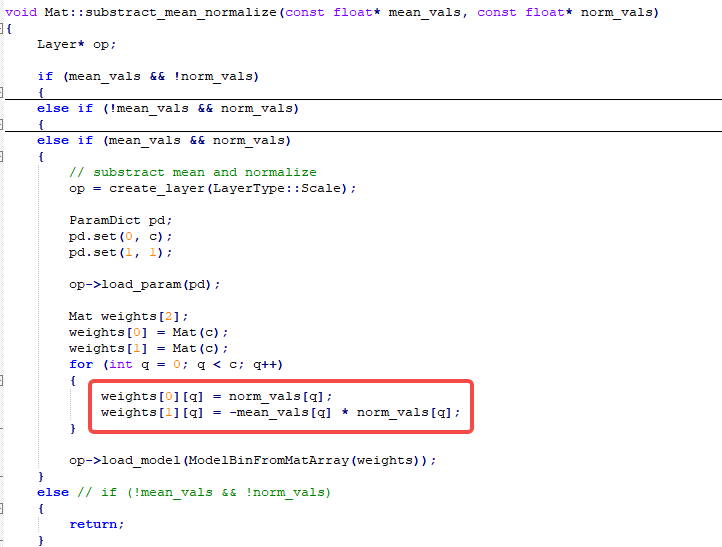前言
前一篇实现了OpenCV推理ResNet18, 这一篇采用腾讯的NCNN框架实现ResNet18推理。
一、准备
1、 NCNN编译及安装
同OpenCV推理一样,首先需要准备NCNN,NCNN源码编译及安装可参考:
2、其他环境
二、NCNN推理ResNet18
1、模型转换
前面已经讲过如何将训练好的模型转换为ONNX格式,要采用NCNN完成推理,还需要进一步将ONNX格式模型转换成NCNN格式,如*.param, *.bin 。
param相应的格式说明可以参考:
ONNX模型转换为NCNN格式可以参考:
通常转换后都会调用ncnnoptimize对其进行优化,可以看到大小和参数量都会变少,这是因为对ncnn模型中部分算子进行合并优化等

以下是转换为param和简化后param的部分视图

2、模型加载
最后输出的blobs数量和layers数量能对应上param里面的数据,即表示加载成功。
3、数据预处理
还是依照python脚本对数据进行预处理

这里采用NCNN自带的一些处理工具,所以预处理转为C++代码如下所示
里面from_pixels_resize接口将CV::Mat cvImg 通道格式由BGR转换为RGB,并由(cvImg.cols, cvImg.rows)缩放至(targetSize, targetSize)大小。
后面substract_mean_normalize接口实现归一化, 注意:这里没有先除255.0将像素值归一化到[0, 1],所以相应的值乘了255,而STD这里采用倒数,是该接口里面是采用乘法

4、模型推理
前面已经加载好了模型,并且数据进行了转换,接下来进行推理
模型的推理结果已经存储到ncnn::Mat out里面,接下来对其进行解析即可得到类型。
以上操作对结果进行了sigmoid操作,输出的outPtr及对应类别的置信度。





















 2346
2346

 被折叠的 条评论
为什么被折叠?
被折叠的 条评论
为什么被折叠?








